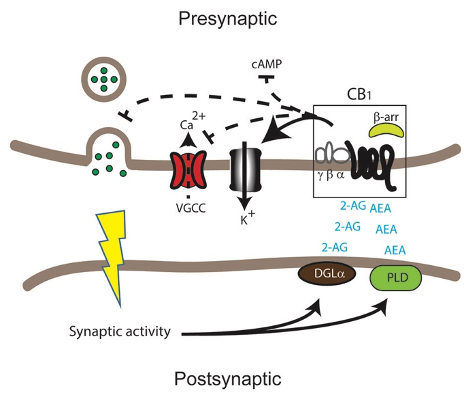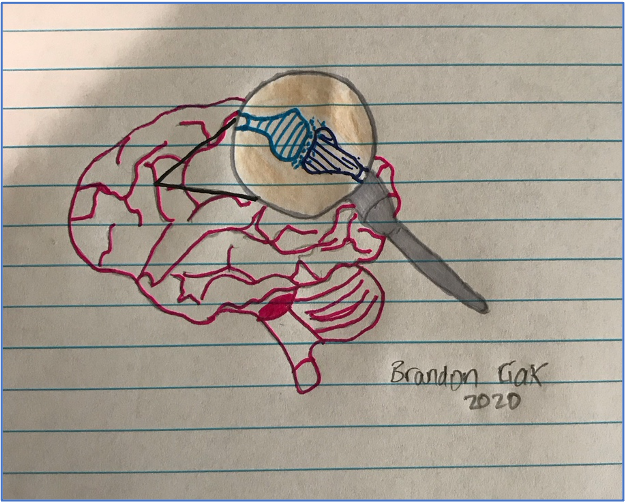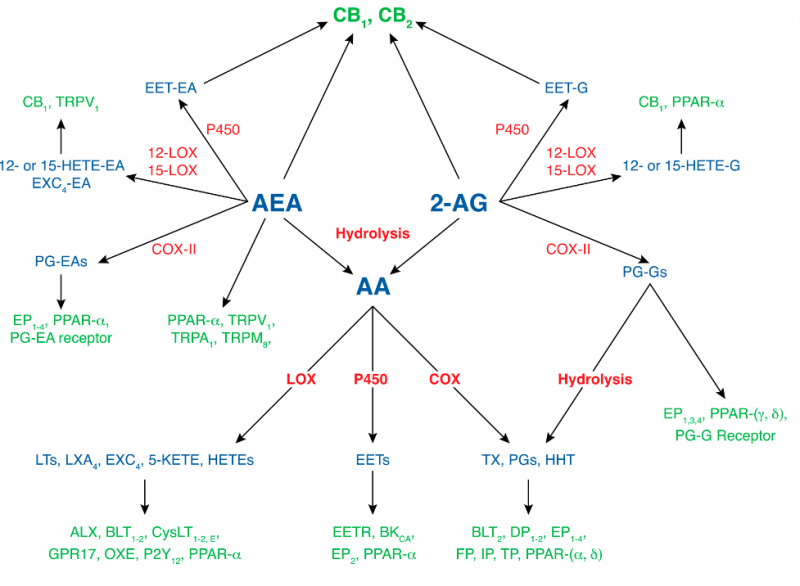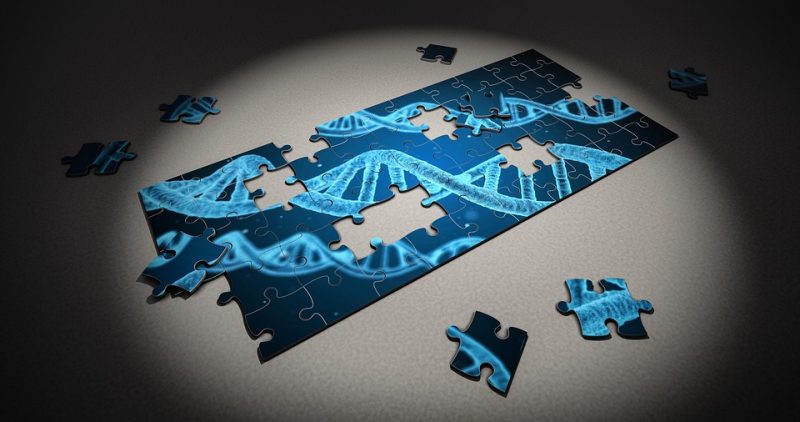If I asked you to name an organ system in the human body, which one would you pick? The cardiovascular or nervous system, due to the well known and fascinating heart and brain? Maybe the respiratory system? What I am guessing you did not choose was the endocannabinoid system (if you did, nice! If you are sitting here wondering if I just made up a system, keep reading below!). What I am also guessing you probably are not aware of, is how close researchers are getting to developing therapies for a variety of central nervous system (CNS) disorders that I bet you were not even aware are associated with this system! These include multiple sclerosis, Huntington’s disease, and Alzheimer’s. If that wasn’t good enough, there also seems to be a strong relationship between this system’s ability to lower inflammation within the body, which can be a precursor for some of these nervous system diseases. Find out more below!
Inside the brain
As to date, two of the most common receptors found within the body are the CB1 and CB2 receptors, which are both G-protein coupled receptors (GPCR), meaning that a ligand binds to these receptors in order to start a chain of events that lead to their specific function within the body. Anandamide (AEA) and 2-Arachidonylglycerol (2-AG) are two of the main endocannabinoids that act as these ligands that bind to the CB1 receptor. This process is outlined in the image below and can be  explored to further depth here. As shown, once the GPCR is activated, it inhibits cAMP, voltage-gated calcium ion channels, and the release of neurotransmitters from the presynaptic neuron, while allowing potassium ions to rush out of the presynaptic cell and into the synaptic cleft.
explored to further depth here. As shown, once the GPCR is activated, it inhibits cAMP, voltage-gated calcium ion channels, and the release of neurotransmitters from the presynaptic neuron, while allowing potassium ions to rush out of the presynaptic cell and into the synaptic cleft.
The CB2 receptor has been targeted largely for the effects it has on the immune system and inflammation within the body, but as we will see below, there may be more of this system included than just that receptor. Overall, the endocannabinoid system (eCBs) in involved in a myriad of events within the body, ranging from memory to pain to mood.
eCBs and Inflammation
Recent studies seem to show both ligands and receptors as being key regulators of the immune system and inflammation in the body. There are a range of functions that are influenced by the eCBs, with just a few listed below:
that are influenced by the eCBs, with just a few listed below:
- Leukocyte functions with regard to B and T cell differentiation
- Macrophages ability to inhibit pro-inflammatory cytokines
- Apoptotic functions of immune cells
- Receptors such as GPR55 that ultimately downregulate inflammatory cells
Researchers are trying to see exactly how these modulations take place from the eCBs and are doing so in three different ways. The first being to increase levels of 2-AG and AEA inhibitors, the second being to administer self-made endocannabinoids/cannabinoids, and thirdly to disrupt CB1 and CB2 receptors  genetically or pharmacologically. The image shown on the left represents how ligands such as AEA and 2-AG may have the majority of the modulatory ability and may have more to do with inflammation than just the CB2 receptor. These two ligands lead to the activation of the two CB receptors, however, actions such as hydrolysis from enzymes shown in red may lead to different receptors (in green) and thus impacting the role of how many CB receptors are available/present in a particular area in the body and lead to it being more susceptible to inflammation.
genetically or pharmacologically. The image shown on the left represents how ligands such as AEA and 2-AG may have the majority of the modulatory ability and may have more to do with inflammation than just the CB2 receptor. These two ligands lead to the activation of the two CB receptors, however, actions such as hydrolysis from enzymes shown in red may lead to different receptors (in green) and thus impacting the role of how many CB receptors are available/present in a particular area in the body and lead to it being more susceptible to inflammation.
Future Implications
There has been much discovery and hope for the eCBs acting as a future therapy option for many CNS diseases, but clearly remains a large amount of research to be continued due to the vast amount of involvement this system in particular has within the body. It still remains largely unknown as to how the body can differentiate the pro- and anti- inflammatory cytokines. Possibly examining further into a variety of ligands/receptors for inflammation control has the ability to start a pinball effect that will lead researchers onto the right path of understanding and developing new ways to treat a variety of conditions in a not-so distant future.
